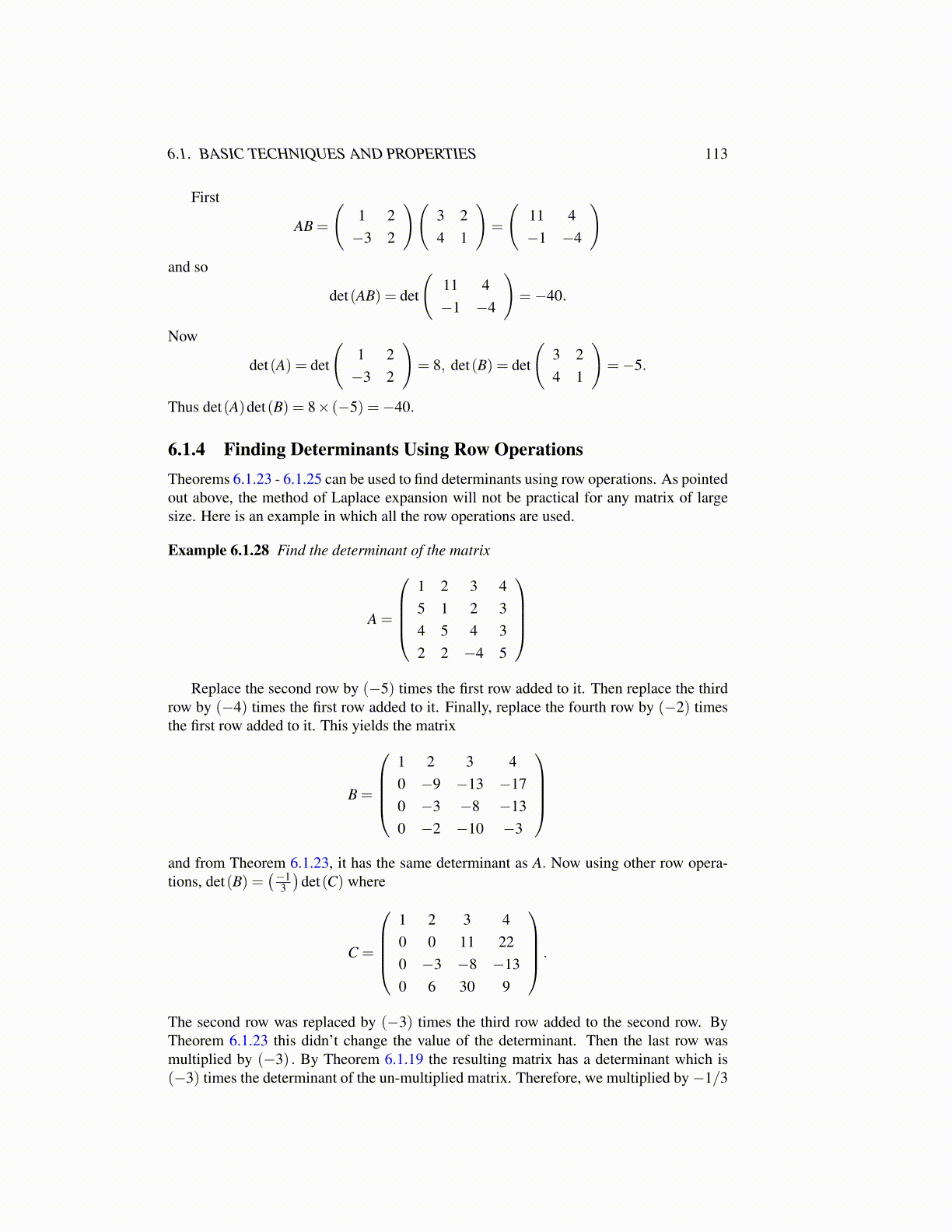
6.1. BASIC TECHNIQUES AND PROPERTIES 113
First
AB =
(1 2−3 2
)(3 24 1
)=
(11 4−1 −4
)and so
det(AB) = det
(11 4−1 −4
)=−40.
Now
det(A) = det
(1 2−3 2
)= 8, det(B) = det
(3 24 1
)=−5.
Thus det(A)det(B) = 8× (−5) =−40.
6.1.4 Finding Determinants Using Row OperationsTheorems 6.1.23 - 6.1.25 can be used to find determinants using row operations. As pointedout above, the method of Laplace expansion will not be practical for any matrix of largesize. Here is an example in which all the row operations are used.
Example 6.1.28 Find the determinant of the matrix
A =
1 2 3 45 1 2 34 5 4 32 2 −4 5
Replace the second row by (−5) times the first row added to it. Then replace the third
row by (−4) times the first row added to it. Finally, replace the fourth row by (−2) timesthe first row added to it. This yields the matrix
B =
1 2 3 40 −9 −13 −170 −3 −8 −130 −2 −10 −3
and from Theorem 6.1.23, it has the same determinant as A. Now using other row opera-tions, det(B) =
(−13
)det(C) where
C =
1 2 3 40 0 11 220 −3 −8 −130 6 30 9
.
The second row was replaced by (−3) times the third row added to the second row. ByTheorem 6.1.23 this didn’t change the value of the determinant. Then the last row wasmultiplied by (−3) . By Theorem 6.1.19 the resulting matrix has a determinant which is(−3) times the determinant of the un-multiplied matrix. Therefore, we multiplied by−1/3